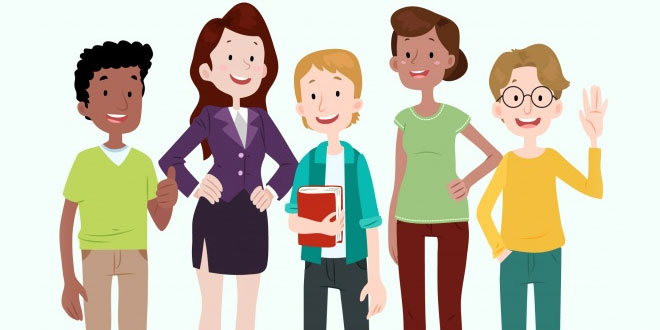Question: Explain the Civil Rights Movement in the USA.
Answer:
- Civil Rights Movement in the USA (1954-1968) refers to a set of events and reform movements aimed at abolishing legal racial discrimination against African-America.
- Led by Martin Luther King Jr., this movement practiced non-violent methods of civil disobedience against racially discriminatory laws and practices.
- The movement inspired many nationalist to raise the issue of racial discrimination at international level. Inspired by the movement, Tommie Smith and John Carlos raised the issue of racial discrimination in the Mexican Olympics.
Question: What was Black Power Movement ? How was it different from the Civil Rights Movement?
Or
Who was the leader of the Civil Rights Movement in USA? Explain the importance of this movement.
Answer: The Black Power Movement was an anti-racist movement launched in Africa.
Differences:
The Black Power Movement emerged in 1966 and lasted till 1975. Whereas Civil Rights Movement emerged in 1954 and lasted till 1968.
The Civil Rights Movement was a non-violent movement. Whereas the Black Power Movement was a militant anti-racist movement, advocating even violence if necessary to end racism in the US.
Question:Taking the examples at Carlos, Smith and Norman, explain how social differences divide similar people from one another but also unite very different people ?
Answer:
- Similarity between Tommie Smith and John Carlos: Both Tommie Smith and John Carlos were African-America. They both were Blacks and were facing racial discrimination in the United States.
- Similarity between Tommie Smith, John Carlos and Peter Norman: Peter Norman, an Australian and both Tommie Smith and John Carlos belonged to different nations but still they all were one, i.e., they all were athletes.
- United on racial discrimination: All the three athletes were united on the issue of racial discrimination though one of them belonged to white class.
Question: “We all have more than one identity and can belong to more than one social group”. Discuss the statement with suitable examples. [CBSE Sept. 2010]
Or
Explain the statement ‘we have different identities in different contexts’.
Answer:
- Carlos and Smith were similar in one way, i.e., they both were African-Americans and thus different from Norman who was white. But they were also all similar in other ways – they were all athletes who stood against racial discrimination.
- It is fairly common for people belonging to the same religion to feel that they do not belong to the same community, because their caste or sect is very different. For example, people of Northern Ireland and Netherlands are predominantly Christians but divided between Catholics and Protestants. –
- Rich and poor persons from the same caste and creed often do not keep close relations with each other for they feel they are very different. Thus, we all have more than one . identity and can belong to more than one social group. We have different identities in different contexts.
Question: How far do you agree with the statement that all social differences are not always an accident? Why are most countries emerging as multi-cultural countries?
Or
All kinds of social differences are not based on accident of birth.
Answer:
- Many of our differences are based on our choices. For example, some people are atheists (those who don’t believe in God) whereas other choose to follow a religion.
- Many differences are based on the occupation we take up.
- Some differences are also based on ideology. For example, in India there are many political parties based on different ideologies.
Question: “The outcome of politics of social divisions depends on how people perceive their identities”. Explain the statement with example.
Answer: Three factors are crucial in deciding the outcome of politics of social divisions. First of all, the outcome depends on how people perceive their identities. If people see their identities in singular and exclusive terms, it becomes very difficult to accommodate. As long as people in Northern Ireland saw themselves as only Catholic or Protestant, their differences were difficult to reconcile. It is much easier if the people see that their identities are multiple and are complementary with the national identity. A majority of Belgians now feel that they are as much Belgian as they are Dutch or German-speaking. This helps them to stay together. This is how most people in our country see their identity : they think of themselves as Indian as well as belonging to a state or a language group or a social or religious community.
 Class Notes NCERT Solutions for CBSE Students
Class Notes NCERT Solutions for CBSE Students





